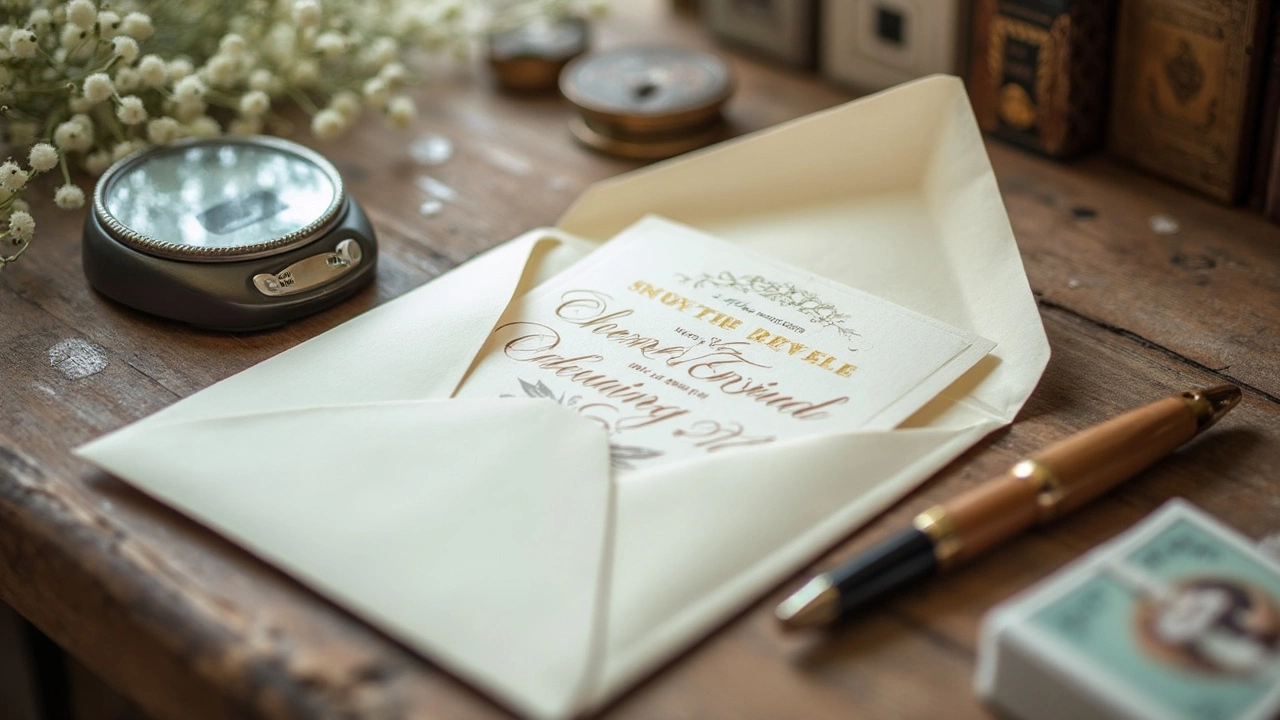Standard Invitation Weight: What’s Normal and Why It Matters
When you order wedding invitations, the first thing you’ll notice is the paper’s thickness. That thickness is measured in grams per square metre (gsm) and is what we call the invitation’s weight. Most couples aim for a weight that feels sturdy but not too heavy for the mailbox. Knowing the standard range helps you choose a paper that matches your style, stays within budget, and arrives on time.
Choosing the Right Paper Weight
In the UK, a typical wedding invite runs between 250 gsm and 350 gsm. Lightweight cards (around 250 gsm) feel elegant and are cheap to mail, but they can bend easily. Mid‑range options (300–320 gsm) give a nice solid feel without adding a lot of extra cost. If you love a luxe look, go for heavyweight paper (350 gsm or more). It feels premium, holds embossing or foil well, and shows off your design, but remember that heavier cards need more postage.
Paper type also affects the perceived weight. A smooth coated cardstock can feel lighter than a textured cotton blend even if the gsm is the same. If you’re not sure, ask your printer for a sample sheet. Feeling the paper in your hand is the fastest way to decide if it matches the vibe you want for your wedding.
How Weight Affects Postage and Budget
Royal Mail charges by weight, so a heavier invitation can add a few pounds to your mailing costs. A standard letter (up to 100 gsm) costs less than a large parcel. For a 300 gsm card with an envelope, you’ll usually need a second‑class stamp for a single piece, but a 350 gsm card might need a first‑class stamp. Multiply that by the number of guests and the postage adds up fast.
To keep costs down, consider using a lighter envelope or removing extra inserts like maps or RSVP cards. Some couples print the main invitation on heavy paper and send RSVP cards on a lighter stock. This mix keeps the feel premium where it counts while saving on postage for the bulk of the mail.
Don’t forget the envelope’s weight either. A lined envelope can add 30‑40 gsm, pushing the total over the stamp limit. Choose a plain envelope for heavier cards or plan for a postage upgrade.
Finally, think about the overall look. A heavier invitation often pairs well with a simple design, while a lighter card can handle more detail without feeling flimsy. Balance the visual impact with the practical side of mailing, and you’ll end up with invitations that look great and arrive on time.
By understanding the standard invitation weight range, you can make informed choices about paper, design, and postage. Stick to the 250‑350 gsm sweet spot for most weddings, test samples, and calculate postage before you place a big order. That way your invites feel just right in hand and in the mailbox, and you avoid surprise costs at the post office.

- Jun, 29 2025
- Comments 0